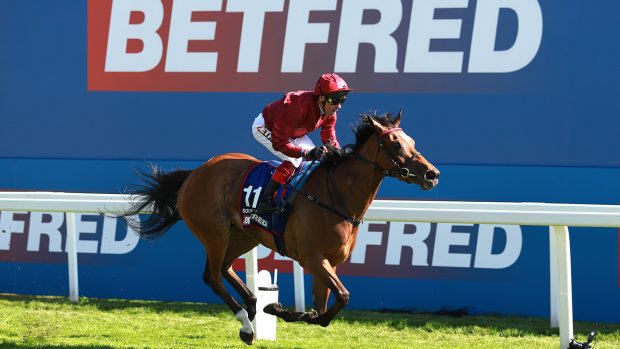Gary Witheford has become a leading force for dealing with troubled horses from all walks of life, most predominantly within the racing industry.
To the outsider, his mesmerising work can seem almost magical — but at the basis of everything he does, are his fundamental principles of natural horsemanship.
Horse & Hound visited Gary at his Wiltshire-base to find out what the first steps he takes are when dealing with a problem horse.
Using Brujo — his legendary grey Andalusian stallion who he rescued as a colt — Gary explains the basic ideas behind his horsemanship (see video above).
The Points
“The Points is how I set out to control [a horse’s] movement, to get inside its head, to have at the end what we call Call-Up, when the horse will actually walk across to me and is prepared to follow me around the ring,” Gary says. “It can look like magic, but it’s not: it’s what the Indians in Americas have been doing for years.”
Pressure and Release
“Before we do anything we need the horse to understand the very basics of Pressure and Release, and we do that just on the halter,” Gary adds.
“‘The Double Diamond’ brand [that I use] is a nylon rope halter with knotted pressure points on the top of the head, under the chin and under the throat: while you don’t pull at a horse, if it backs off and pulls at you, the knots tighten.
“But as the knots are half-hitchers, if the horse stops pulling back, it eases off — hence our words Pressure and Release.”
Halter work
“The first thing you do is put the halter on and establish your leadership,” he says. “That may sound big, but it just means that you face the horse and check it back on the halter, and bring it forward when you want.
“The best place to do this is actually in the box. You look at him direct in the eye, with your shoulders up, and drive him back, and then relax your shoulders and ease your posture as you ask him forward.
“You will know when the horse gets this, because he will drop his head and lick and chew with his lips and teeth: it is his language of acceptance.”
Keen to find out more about Gary’s work? If Horses Could Talk by Gary Witheford with Brough Scott is now available at Racing Post books, priced at £20. Visit shop1.racingpost.com
Horse & Hound advises you to wear appropriate safety wear




